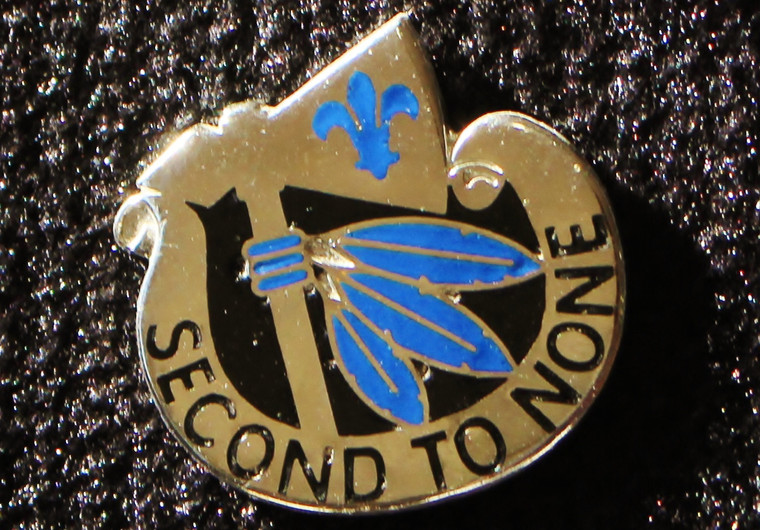
The 2nd Infantry Division's Unit Crest, or DistinctiveUnit Insignia, is considerably more stylized than its unit patch (Shoulder Sleeve Insignia) and the metallic badge equivalent for the Army Service/Dress Uniform, the Combat Service Identification Badge (CSIB)
Blue and white are Infantry colors, while the Indian head from the unit patch/CSIB has been replaced with a tomahawk emblazoned with a fleur-de-lis, signifying France as the location of the unit’s first combat action. Three feathers stand for the three major conflicts—WWI, WWI, and Korea—in which the unit fought, and its motto, "Second to None," is inscribed on a scroll encircling the tomahawk.
The 2nd Infantry Division played a critical role during the Korean War, becoming the first unit to break out of the "Pusan Perimeter," a last-stand defensive line set up some 325 miles southeast of the South Korean capitol of Seoul. After the breakout, the 2nd Infantry and the Eighth Army not only pushed the North Korean invaders out of South Korea (thanks in no small part to the landings at Inchon) but advanced almost to the Manchurian border before a force of 150,000 Chinese soldiers of the People's Volunteer Army launched a counterattack that threatened to encircle and destroy or capture Eighth Army at the Battle of the Ch'ongch'on River.
The 2nd Infantry Division was able to capture the small village of Kunu-Ri, where they were able to protect Eighth Army's right flank as it withdrew, but the delay in executing their own retreat allowed the Chinese to set up a six-mile roadblock that was dubbed "The Gauntlet." The Division suffered substantial casualties and eventually were forced to leave the roadway and make their way south through the hills. Before it completely escaped, the Division had lost most of its artillery, nearly half its signal equipment and crew-served weapons, and had more than 4,000 casualties, but its courage in slowing the Chinese advance saved untold numbers of Americans.
The DUI is the picture is the one you will receive.






